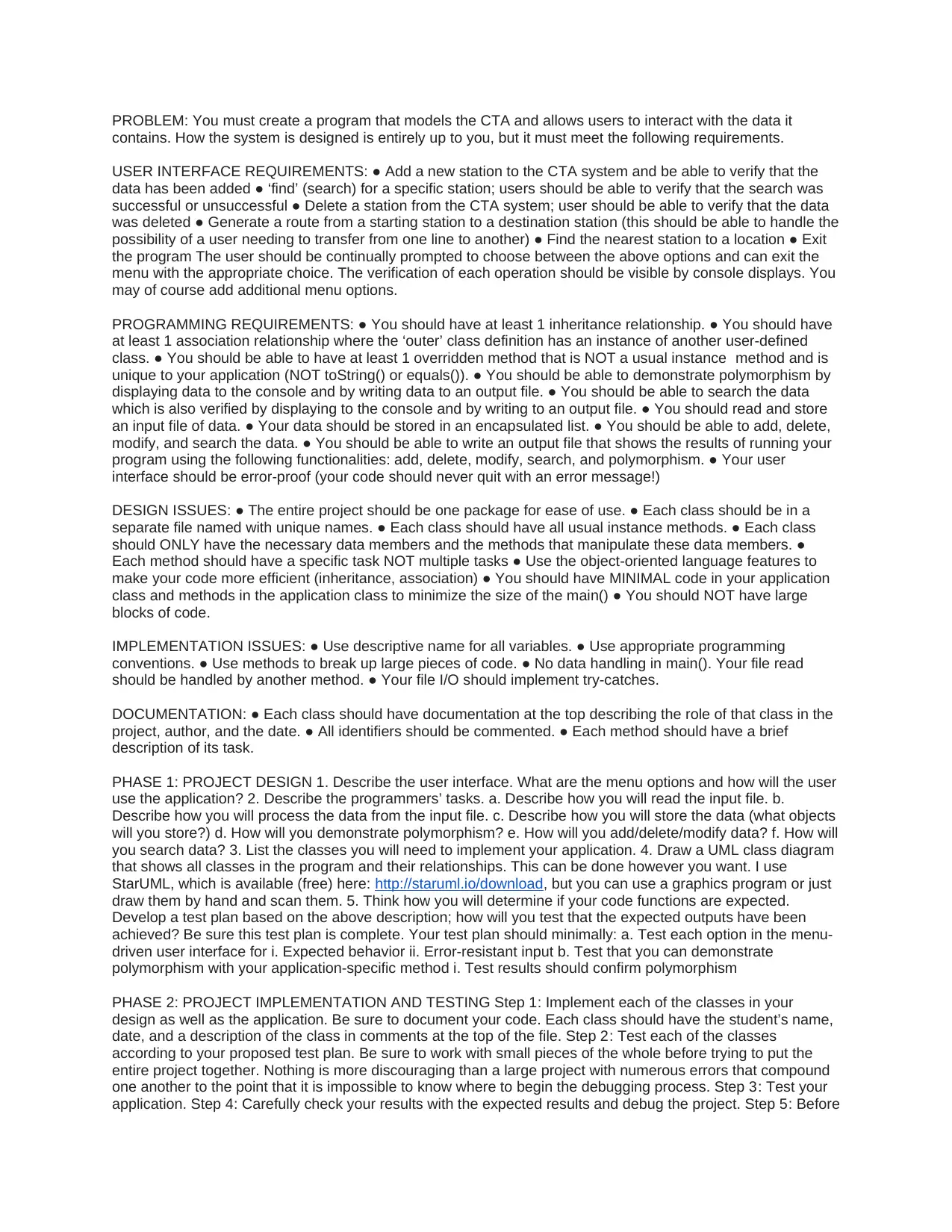CTA System Project - AI and Data Structures for Route Generation
VerifiedAdded on 2019/09/13
|2
|1072
|416
Project
AI Summary
This project involves creating a program that models the Chicago Transit Authority (CTA) system, allowing users to interact with the data it contains. The system must provide a user-friendly interface with options to add, search, delete stations, generate routes, and find the nearest station to a location. The project emphasizes object-oriented programming principles, requiring at least one inheritance and one association relationship, along with method overriding to demonstrate polymorphism. The program must read and store data from an input file, store data in an encapsulated list, and write output to a file showing the results of the program's functionalities. Error-proof user interface design and thorough documentation are essential. The project is divided into two phases: project design (including a UML class diagram and test plan) and implementation/testing. The design phase includes describing the user interface, programmer tasks, data storage methods, polymorphism demonstration, data manipulation, and search implementation. The implementation phase involves developing and testing each class, followed by application testing, debugging, and user-friendliness testing.
1 out of 2








![[object Object]](/_next/static/media/star-bottom.7253800d.svg)